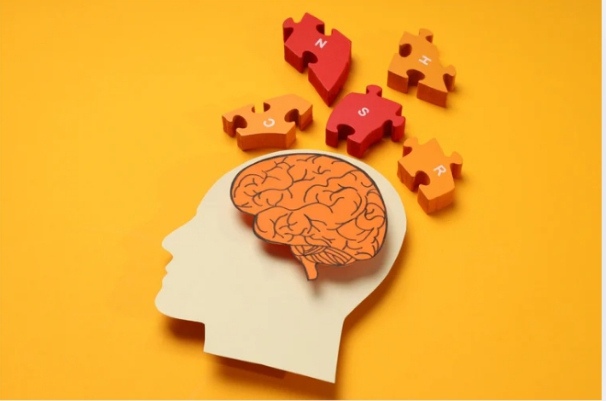
How Does The WMM Explain The Results Of Landry Explained 2024
Introduction
Ever wonder how our brains juggle multiple tasks without dropping the ball? That’s where the Working Memory Model (WMM) steps in. Developed by Baddeley and Hitch in 1974, the WMM provides a framework for understanding how we process, store, and manipulate information in real-time. Landry’s research adds another layer to this understanding, offering insights into how the WMM operates under various conditions. In this article, we’ll break down How Does The WMM Explain The Results Of Landry explore experiment, and see how the model explains the findings.
Understanding the Working Memory Model (WMM)
What is the WMM?
How Does The WMM Explain The Results Of Landry the Working Memory Model is a cognitive framework that describes how the brain processes information on the fly. Unlike the older “short-term memory” concept, the WMM is more dynamic, focusing on active manipulation rather than passive storage.
Origins and Development
Alan Baddeley and Graham Hitch proposed the WMM to address shortcomings in Atkinson and Shiffrin’s memory model. They emphasized the brain’s capacity to manage multiple tasks simultaneously—a necessity in daily life.
Core Components
Central Executive: The boss of working memory, managing attention and coordinating tasks.
Phonological Loop: Handles verbal and auditory information, like rehearsing a phone number.
Visuospatial Sketchpad: Deals with visual and spatial data, like navigating a map.
Episodic Buffer: Integrates information from different sources into a coherent whole.
Landry’s Experiment: An Overview
Purpose of the Study
Landry aimed to investigate how different components of working memory interact during complex tasks. The goal was to test the limits of the WMM and explore how multitasking affects performance.
Experimental Setup
Participants performed dual tasks that required using both verbal and spatial memory. For example, they might solve a puzzle while remembering a list of numbers. These tasks were designed to isolate specific components of the WMM.
Key Findings
Landry found that performance dropped significantly when tasks relied on the same WMM component. For instance, verbal tasks clashed with the phonological loop, while visual-spatial tasks overloaded the visuospatial sketchpad. This supports the idea that working memory has distinct subsystems with limited capacity.
How the WMM Explains the Results
Role of the Central Executive
In Landry’s study, the central executive’s limitations became apparent. It struggled to allocate attention effectively when tasks demanded simultaneous processing, highlighting its finite resources.
Phonological Loop in Action
Verbal tasks in the experiment demonstrated the phonological loop’s role. When participants had to rehearse words while listening to new information, interference was inevitable, proving the loop’s capacity constraints.
Visuospatial Sketchpad Insights
Tasks involving navigation or puzzle-solving emphasized the sketchpad’s role. Overloading this subsystem led to errors, reinforcing the idea of specialized storage systems.
Episodic Buffer’s Functionality
The episodic buffer showed its strength in integrating diverse data. However, when overwhelmed, it struggled to maintain coherence, affecting overall task performance.
Comparing the WMM to Other Theories
Strengths of the WMM
The WMM’s modular approach is its biggest strength. Unlike single-store models, it accounts for the complexity of multitasking and real-world cognitive demands.
Limitations of the WMM
Despite its strengths, the WMM isn’t perfect. Landry’s findings highlight gaps, such as its inability to fully explain individual differences in working memory capacity.
Implications of Landry’s Study
Real-World Applications
Landry’s research has practical implications. For instance, understanding working memory can improve teaching methods, enhance user interfaces in tech, and optimize workflows in high-stakes jobs.
Future Research Directions
Landry’s findings pave the way for further exploration. How do emotions affect working memory? Can training improve its capacity? These questions remain open for investigation.
Conclusion
How Does The WMM Explain The Results Of Landry experiment is a testament to the WMM’s explanatory power. By isolating its components, the study reveals the intricate dance of cognitive processes that enable us to function in a complex world. While the WMM isn’t without flaws, it remains a cornerstone of cognitive psychology, offering insights that are as practical as they are profound.
FAQs
What is the Working Memory Model? The WMM is a cognitive framework explaining how we process and manipulate information in real-time.
What did Landry’s experiment prove? It demonstrated that working memory has distinct subsystems with limited capacity, which struggle when overloaded.
Why is the WMM important? It helps us understand multitasking, attention management, and real-world cognitive challenges.
What are the WMM’s components? Central executive, phonological loop, visuospatial sketchpad, and episodic buffer.
How can the WMM be applied in daily life? Its insights can improve education, technology design, and productivity strategies.



